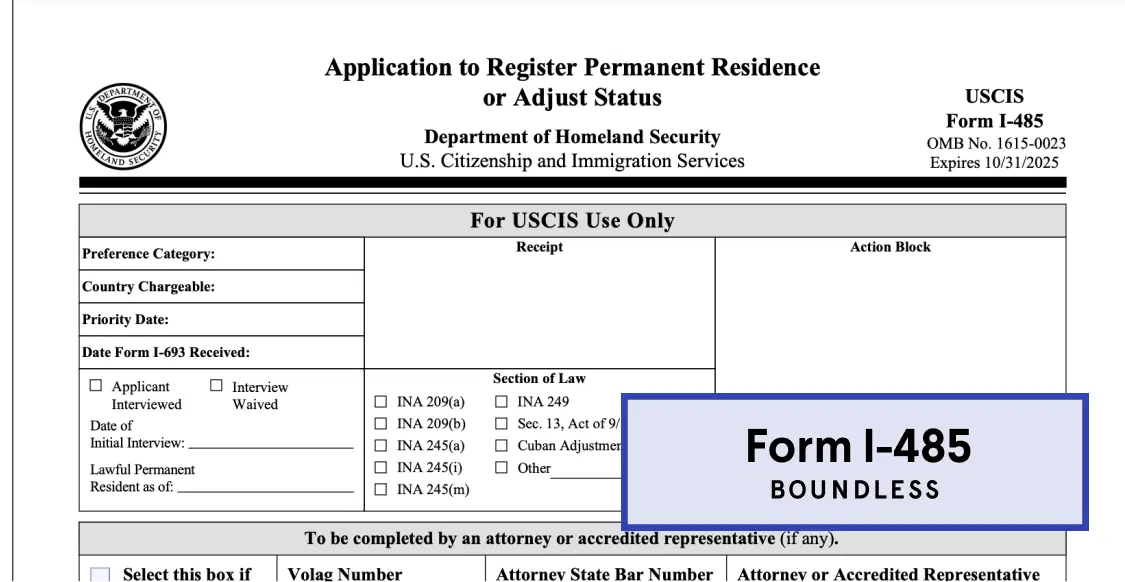Adjustment of Status (AOS) is a process in the United States that allows certain non-immigrants. Who are already in the country to apply for lawful permanent resident status. Also known as a green card, without having to leave the United States. It is an important step in the immigration process for individuals who wish to obtain permanent residency and eventually become U.S. citizens.
Here are some key points to understand about Adjustment of Status:
Eligibility: To be eligible for Adjustment of Status, you typically must meet certain criteria. Common categories of eligibility include family-sponsored immigrants, employment-based immigrants, refugees, asylees, and certain other special groups.
Non-immigrant Status: In most cases, you must be in a valid non-immigrant status when you apply for Adjustment of Status. This means that you entered the United States legally and have maintained your status throughout your stay.
Priority Dates: Many immigrants are subject to annual numerical limits, and green cards are issued based on a priority date system. This date is established when a petition is filed on your behalf (e.g., by a family member or employer) and is used to determine when you can apply for Adjustment of Status.
Application Process: The process generally involves filing an application package with U.S. Citizenship and Immigration Services (USCIS), including Form I-485, Application to Register Permanent Residence or Adjust Status. You may also need to attend a biometrics appointment and an in-person interview as part of the process.
Work Authorization: While your Adjustment of Status application is pending, you can typically apply for an Employment Authorization Document (EAD), which allows you to work legally in the United States while your green card application is being processed.
Travel: If you need to travel outside the United States while your Adjustment of Status application is pending, you may need to apply for a travel document known as Advance Parole to re-enter the country without abandoning your application.
Processing Time: The processing time for Adjustment of Status applications can vary widely depending on factors such as the applicant’s category, country of origin, and USCIS workload. It’s important to check processing times regularly and be prepared for potential delays.
Once your Adjustment of Status application is approved, you will be granted lawful permanent resident status, and you will receive your green card. This allows you to live and work in the United States indefinitely, and it is typically a step toward eventually becoming a U.S. citizen if you meet the eligibility requirements.
Form I-485 checklist
Form I-485, Application to Register Permanent Residence or Adjust Status, is a comprehensive application used in the United States to apply for adjustment of status to obtain a green card. The required documents and supporting evidence can vary depending on your specific eligibility category and individual circumstances. However, here is a general Form I-485 checklist to help you prepare your application:
1. Form I-485 Application: Complete and sign Form I-485. Ensure that all sections are filled out accurately, and use black ink. Review the latest version of the form on the U.S. Citizenship and Immigration Services (USCIS) website.
2. Filing Fee: Include the appropriate filing fee with your application. USCIS periodically updates fees, so check the USCIS website for the current fee amount and acceptable payment methods. Fee waivers may be available for certain applicants with financial hardship.
3. Passport Photos: Include two passport-sized photos of yourself. Follow USCIS photo requirements, which are detailed on the USCIS website.
4. Copy of Birth Certificate: Provide a copy of your birth certificate or a suitable substitute, such as a copy of your passport’s biographical page.
5. Copy of Passport: Include a copy of the biographical page(s) of your passport, as well as copies of any U.S. visa pages and entry stamps.
7. Form I-693 (Report of Medical Examination and Vaccination Record): This form should be completed by an authorized civil surgeon and submitted in a sealed envelope. It is used to show that you have received the required medical examination and vaccinations.
8. Form I-864 (Affidavit of Support): If your adjustment of status is based on a family relationship, the sponsoring relative may need to submit Form I-864 to demonstrate their financial ability to support you. Ensure that the form is completed accurately and signed.
9. Form I-944 (Declaration of Self-Sufficiency): This form may be required if you are subject to the public charge rule. It assesses your financial situation and resources. Check the USCIS website for the latest requirements regarding Form I-944.
10. Form I-765 (Application for Employment Authorization): If you want to apply for an Employment Authorization Document (EAD) to work in the U.S. while your I-485 is pending, complete and submit Form I-765 along with the appropriate filing fee.
11. Form I-131 (Application for Travel Document): If you plan to travel outside the U.S. while your I-485 is pending, you may need to submit Form I-131 to request Advance Parole. Include the appropriate filing fee.
12. Supporting Documents: Include any additional documents required for your specific eligibility category. This may include marriage certificates, divorce decrees, adoption papers, police clearances, and more, depending on your circumstances.
13. Translation: If any documents are not in English, provide certified translations along with the original documents.
14. Copies: Make copies of all the documents you submit for your records.
15. Mailing: Mail your completed application package to the appropriate USCIS address, as indicated in the instructions for Form I-485.



